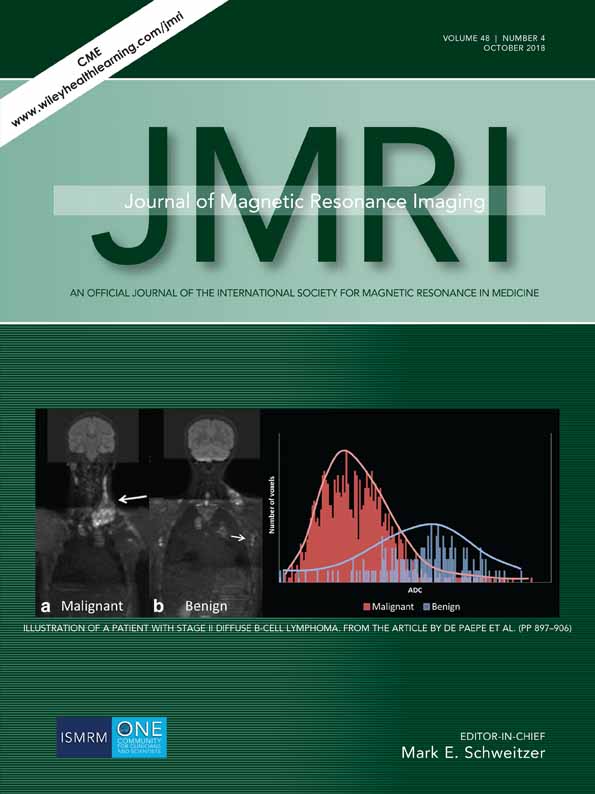Exploration of male urethral sphincter complex using diffusion tensor imaging (DTI)-based fiber-tracking
Abstract
Background
Urinary incontinence is a major clinical problem arising primarily from age-related degenerative changes to the sphincter muscles. However, the precise anatomy of the normal male sphincter muscles has yet to be established. Diffusion tensor imaging (DTI) may offer a unique insight into muscle microstructure and fiber architecture.
Purpose
To explore the anatomy of the urethral sphincter muscles pertinent to urinary continence function using DT-MRI.
Study Type
Prospective cohort study.
Subjects
Eleven normal male subjects (mean age: 25.4 years); two subjects were scanned in three separate sessions to assess reproducibility.
Field Strength/Sequence
3T; using a diffusion-weighted spin echo planar sequence.
Assessment
DT parameters including fractional anisotropy (FA), primary (λ1), secondary (λ2), and tertiary (λ3) eigenvalues, Apparent diffusion coefficient and radial diffusivity were analyzed statistically, while tracked muscle fibers were assessed visually.
Statistical Tests
Regional differences (sphincters and longitudinal muscle of the urethra) in the DTI indices were assessed by one-way analysis of variance. A Tukey post-hoc test was used to identify significant differences between muscle regions.
Results
Two sphincter muscles, one proximal near the base of the bladder, corresponding to the lisso-sphincter, and the other distal to the end of the prostate corresponding to the rhabdo-sphincter, surrounding a central urethral muscle fiber bundle, were clearly identified. FA was higher and λ3 lower in the proximal sphincter muscle compared to the central urethral muscle and the distal sphincter (P < 0.05). The average coefficient of variation ranged from 5–12% for the DTI indices.
Data Conclusion
Since DTI values are known to reflect underlying tissue microarchitecture, significant differences in DTI indices identified here between the muscles of the urethral complex may potentially arise from differences in tissue microarchitecture that may in turn be related to the specific function of the sphincter and other muscles.
Level of Evidence: 1
Technical Efficacy: Stage 2
J. Magn. Reson. Imaging 2018;48:1002–1011.




